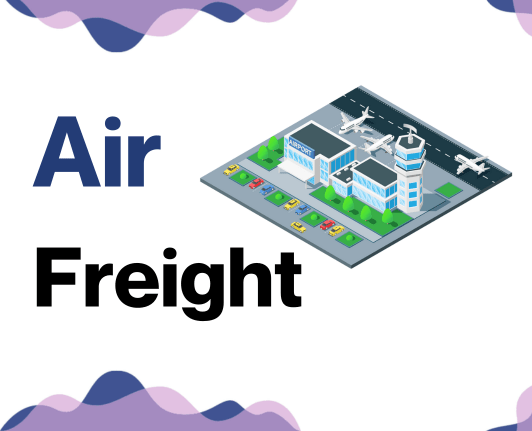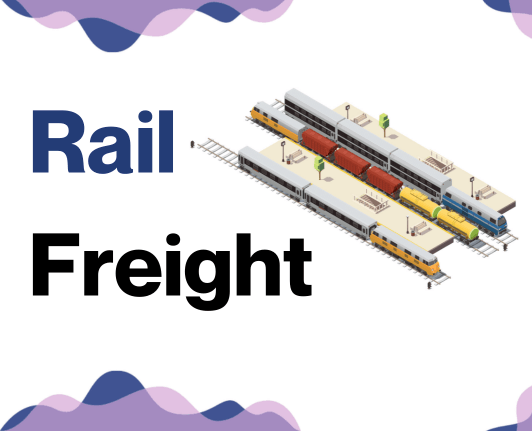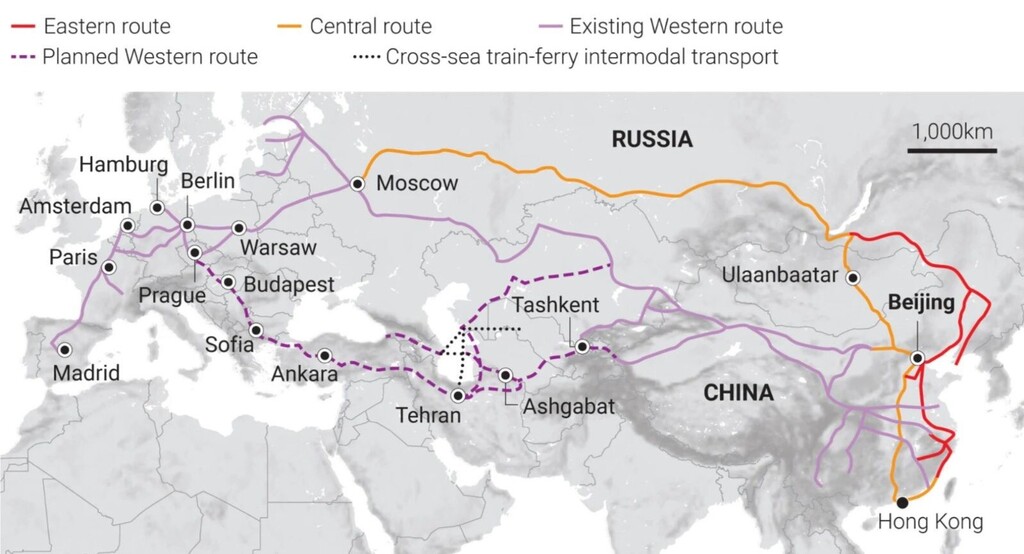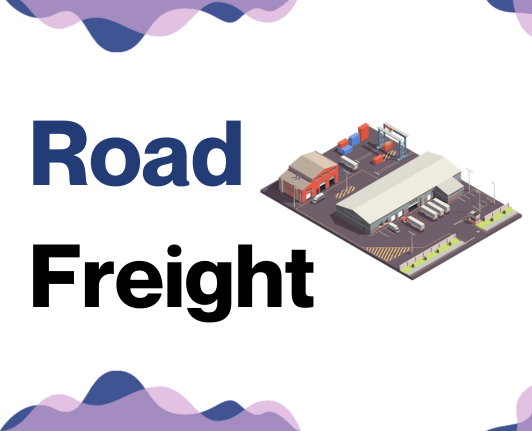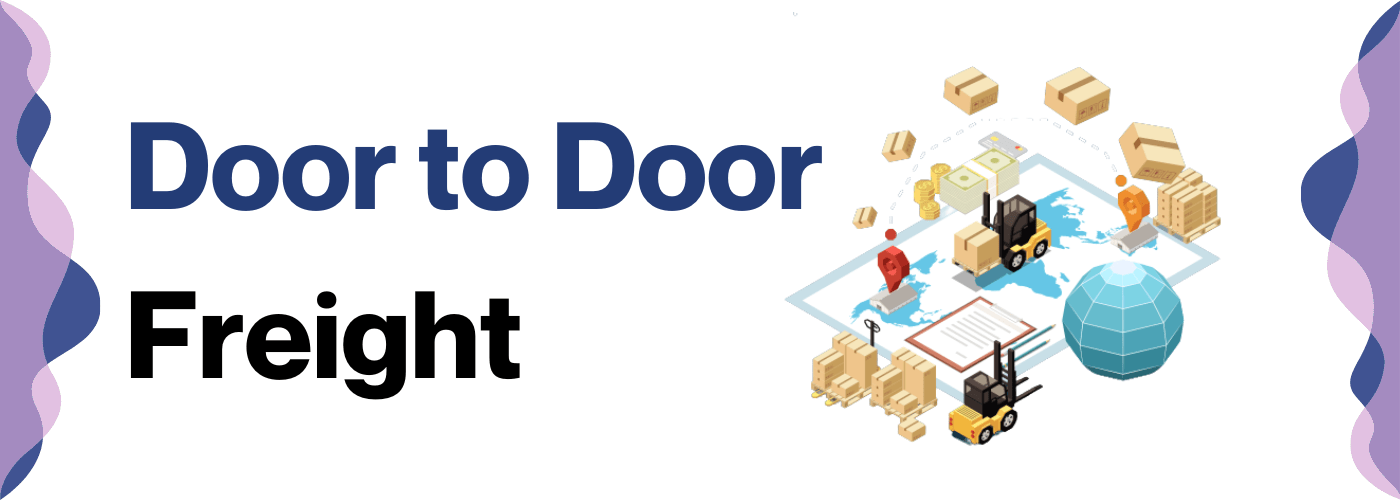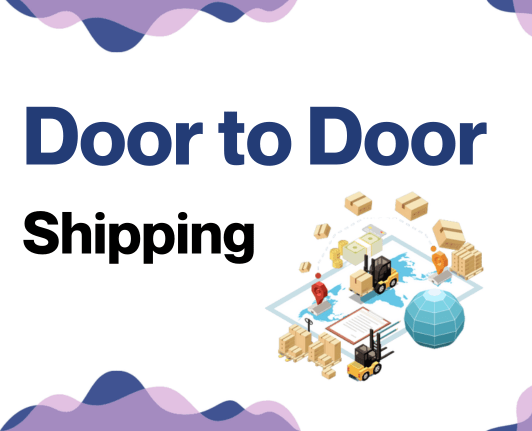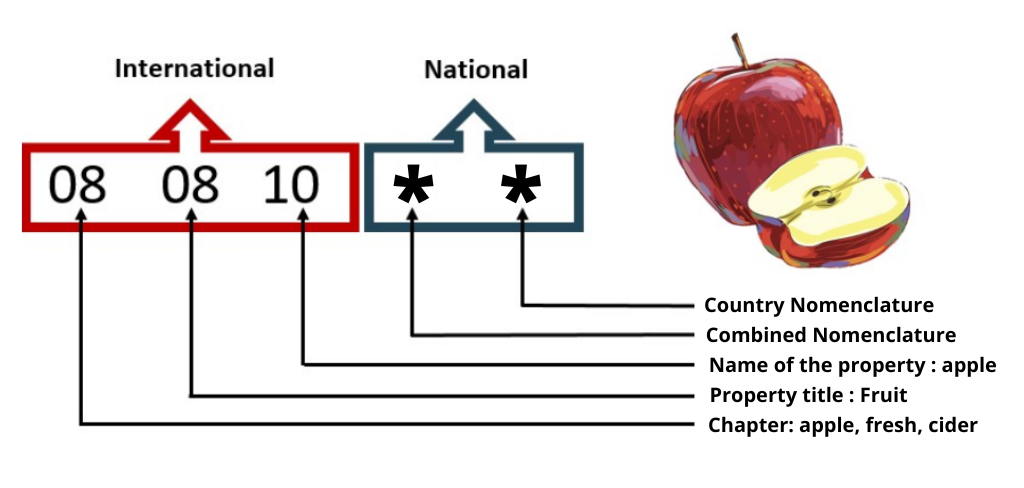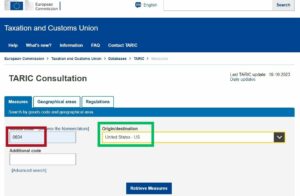Ever wondered how cargo makes its way from the U.S. to Germany? It's a journey that demands expertise and precision. Navigating the intricacies of freight transport rates, transit times, and customs regulations between the United States and Germany can be daunting. Our in-depth guide acts as your personalized classroom, providing clear instruction on various freight options: air, sea, road, or rail. From deciphering the nuances of customs clearance to understanding the maze of duties and taxes, this guide is tailored for businesses aiming to simplify their international freight transport experience. Feeling overwhelmed? Let DocShipper take the reins! As seasoned international freight forwarders, we expertly navigate every step, transforming challenges into triumphs. Trust us to handle your shipping needs, turning your logistics journey into a seamless success story.
Table of Contents
ToggleWhich are the different modes of transportation between US and Germany?
Shipping goods between the US and Germany is like mapping a long journey - you can choose to fly, sail, or drive. Air freight is often the fastest, crossing the Atlantic in a snap. If you've got heavier goods, ocean freight is your sturdy ship, albeit longer. For European countries nearby, rail or road transport might be your economic highway. The best route? That depends on your cargo's weight, urgency, and the cash in your pocket. Think of your shipping need as your compass, guiding you to the best transportation choice for your unique journey.
How can DocShipper help?
Shipping transatlantic can be a hassle - but not with DocShipper! From US to Germany, we streamline your freight operations, navigate customs with ease, and deliver timely. Got a question? Our experts are just a call away. So, why wait? Secure your free estimate in less than 24 hours. Contact us today.
DocShipper Tip: Sea freight might be the best solution for you if:
- You are shipping large volumes or bulky items, as sea freight offers the most space at a cost-effective rate.
- Your cargo doesn't have an urgent deadline, as sea freight typically has longer transit times compared to air or rail.
- Your shipping routes are between major ports, allowing you to leverage the extensive global network of sea shipping lanes.
Sea freight between US and Germany
Shipping goods across the Atlantic from the United States to Germany has its share of intricacies. Weaving through the maze of bustling cargo ports like Hamburg in Germany and Baltimore in the U.S., the containers chug along, connecting integral industrial centers. Ocean freight stands tall as the trophy bearer of cost-effectiveness, especially for high-volume shipments, even though it might take longer than air freight.
However, the journey from point A to B isn't always smooth sailing - what with the myriad customs protocols to follow and potential pitfalls waiting to derail your plans. Imagine the game of chess. Each move you make in international shipping, like in chess, needs thought and strategy. Miss a detail, and you may find your shipment delayed, or worse, confiscated. This section serves as your chess manual, guiding you through the best practices that can help you dodge common blunders many businesses make while shipping between these two countries. Watch this space to gain practical insights and make your shipping process as efficient as a perfectly played chess game.
Main shipping ports in US
Port of Los Angeles
Location and Volume: In August 2023, the Port of Los Angeles handled 433,224 TEUs (Twenty-foot Equivalent Unit) of loaded imports, a 7% increase from the previous year. Loaded exports rose by 22% to 124,988 TEUs compared to 2022. Empty containers totaled 269,804 TEUs, showing a 10% decline. These figures contributed to a total of 828,016 TEUs for the month, marking a 3% increase from the previous August. With a year-to-date total of 5,649,686 TEUs processed in 2023, the port remains a vital hub in San Pedro Bay, offering unmatched infrastructure and proximity to major U.S. cities.
Key Trading Partners and Strategic Importance: The Port of Los Angeles is a key port of entry for Asian-Pacific trade, with China, Japan, Vietnam, South Korea, and Taiwan among its main trading partners.
Context for Businesses: If you're looking to target the busy Asian markets, the Port of Los Angeles could be a crucial part of your logistics due to its comprehensive array of shipping services, including container shipping, dry bulk, and break bulk services.
Port of Long Beach
Location and Volume: Situated adjacent to the Port of Los Angeles, the Port of Long Beach handled 1.72m TEUs in Q1 2023, down 30% from Q1 2022. This decline is due to the normalization of container trade, high inventory levels, lower consumer spending, and a resulting drop in exports from China.
Key Trading Partners and Strategic Importance: This port's main trading partners are located in East Asia, including China, Vietnam, and South Korea. It is most notable for its Green Port Policy, an industry benchmark for environmental stewardship.
Context for Businesses: Businesses aiming for sustainability may consider the Port of Long Beach because of its commitment to eco-friendly practices.
Port of New York and New Jersey
Location and Volume: On the U.S. East Coast, the Port of New York and New Jersey stands as a crucial hub for North Atlantic trade, boasting a robust shipping volume of around 7.5 million TEU. In May 2023 alone, the port saw a significant surge, handling 5% more cargo than the pre-pandemic May 2019. Additionally, it moved 4.3% more cargo compared to the previous month, reaching 676,311 TEU, reflecting a 5.1% increase from May 2019. These numbers highlight the port's pivotal role, further solidifying its status as the country's second-busiest port for loaded imports.
Key Trading Partners and Strategic Importance: While primarily serving trade with Canada, China, and India, this port's reach extends globally. For businesses trading with Europe, it offers an appreciable alternative to West Coast ports.
Context for Businesses: If you're expanding into European and Eastern Canadian markets, the Port of New York and New Jersey could streamline your logistics due to its strategic location and excellent connectivity to inland transportation networks.
Port of Savannah
Location and Volume: Nestled in the state of Georgia along the Atlantic Ocean, The Port of Savannah handled a total of 3,236,290 TEUs in 2023. This represents a 11.2% decrease from the 5,892,131 TEUs handled in 2022. The decline is attributed to a number of factors, including the normalization of container trade, high inventory levels among US importers, lower US consumer spending, and a resulting drop in exports from China.
Despite the decline, the Port of Savannah remains one of the busiest ports in the United States. The port is well-positioned to handle future growth, with a number of expansion projects underway.
Key Trading Partners and Strategic Importance: The Port of Savannah is a crucial port serving trade with Central and South America, as well as Europe and Asia. It prides itself on its efficient handling of containerized goods and neo-bulk cargo.
Context for Businesses: If your business deals in high-volume, containerized goods, consider the Port of Savannah for its efficient unloading and the low port congestion rates.
Location and Volume: The Port of Houston is the largest Gulf Coast container port, handling 73% of U.S. Gulf Coast container traffic. The port is a major economic engine for the region, supporting 1.54 million jobs in Texas and 3.37 million jobs nationwide.
In 2023, the Port of Houston handled a total of 12,915,046 container imports, down 4% from the 13,445,979 container imports handled in 2022. The decline is attributed to a number of factors, including the normalization of container trade, high inventory levels among US importers, lower US consumer spending, and a resulting drop in exports from China.
Key Trading Partners and Strategic Importance: Mexico and China are two of the port's biggest trading partners. It's a key hub for the energy industry, particularly petrochemical goods.
Context for Businesses: If your company is in the energy sector, the Port of Houston could be a fitting choice due to its specialization in petroleum and petrochemical equipment transport.
Port of Seattle
Location and Volume: Located in the Pacific Northwest, the Port of Seattle processes a shipping volume around 1.8 million TEU.
Key Trading Partners and Strategic Importance: This port, combined with the nearby Port of Tacoma under the Northwest Seaport Alliance, primarily serves trade routes with Asia, specifically China, Japan, and South Korea.
Context for Businesses: If you're targeting the Pacific Northwest or Canadian markets, the Port of Seattle is worth considering, given its strategic location and robust intermodal links, including rail connections to major North American cities.
Main shipping ports in Germany
Port of Hamburg
Location and Volume: Located in the city of Hamburg, In 2022, 8.3 million TEUs traveled through the Port of Hamburg's quaysides. Container handling accounted for over 70% of total handling, with slightly under 82.3 million tonnes carried.
Key Trading Partners and Strategic Importance: Key trading partners include China, Russia, and the United States. The port's strategic importance is embodied in its major role in the transshipment of goods from sea to rail and road.
Context for Businesses: If you're looking to tap into both the European and Asian markets, the Port of Hamburg can be a great fit. Its significant trading volumes and major role in intermodal shipments make it a noteworthy hub for international commerce.
Port of Bremerhaven
Location and Volume: Located in northern Germany, In 2022, the German port of Bremerhaven handled 4,573,000 TEUs. This is a reduction from the 5,019,000 TEUs handled in 2021. Since the 1960s, the port's container throughput has been steadily increasing, peaking at 6,134,000 TEUs in 2012.
Bremerhaven's port is a key European transportation hub, with connections to major rail and road networks. A number of logistical and industrial firms are also located at the port.
The Port of Bremerhaven is committed to environmental sustainability. The port is engaging in a number of environmental measures, including the utilization of renewable energy and the electrification of its port equipment. Bremerhaven's port is an important actor in the world economy. The port's efficient operations and strategic location make it a well-positioned to handle the growing demand for containerized cargo.
Key Trading Partners and Strategic Importance: Key trading are largely European countries, the USA, and China. This port has strategic importance due to its well-established automobile industry and as the fourth largest container port in Europe.
Context for Businesses: If your business is involved in the automotive sector, then you might find the Port of Bremerhaven appealing. With its strong links to the car industry, it could provide an effective route for those importing or exporting vehicles.
Port of Wilhelmshaven
Location and Volume: Situated on the western coast of Germany, the Port of Wilhelmshaven in Germany handled 713,000 TEUs in 2021, a record high for the port. This represents an increase of 68.5% from the previous year. The port's container throughput is expected to continue to grow in the coming years, with the port targeting a throughput of 1 million TEUs by 2025.
The Port of Wilhelmshaven is a deep-water port that can accommodate the largest container ships in the world. The port is also well-connected to major rail and road networks, making it a strategic location for the transport of goods. The port is committed to sustainability and is investing in a number of initiatives to reduce its environmental impact.
Key Trading Partners and Strategic Importance: Trading partners include China and other major global players. This port's strategic importance is driven by its exclusive capability to serve the biggest container vessels in the world, which most other ports cannot handle.
Context for Businesses: If your business involves the transportation of large goods volumes, then the Port of Wilhelmshaven, with its deepwater facilities, could be an advantageous choice to consider in your shipping strategy.
Port of Duisburg
Location and Volume: The Port of Duisburg, located in the heart of Europe, is the world's largest inland port and the leading logistics hub in Central Europe. In 2023, the port is expected to handle 4.3 million TEUs of container cargo.
The port is well-connected to major rail and road networks, making it a strategic location for the transport of goods to and from Europe and Asia. The port is also home to a number of major logistics and industrial companies.
Key Trading Partners and Strategic Importance: It mainly trades with European countries due to its inland position, demonstrating its strategic importance in the European supply chain.
Context for Businesses: If your focus is primarily on the European market, the Port of Duisburg could be integral in managing your logistics, given its central location, and key role in the European supply chain.
Port of Neuss
Location and Volume: Located in the Rhine-Ruhr region, this port is an essential part of the Central European logistics hub, accommodating around 1.3 million TEUs.
Key Trading Partners and Strategic Importance: This port primarily trades with European countries, offering a key logistics hub in Central Europe.
Context for Businesses: If you're seeking to strengthen your position in Central Europe, the Port of Neuss might play a crucial role in your logistics plans due to its central location in the region and capacity for high-volume handling.
Port of Kiel
Location and Volume: Situated in the northern part of Germany. In 2020, containers in TEU totaled 28,774, slightly surpassing the total number of cargo units (28,768), indicating their prevalence in the United States. This trend highlights the significance of containers, driven by factors like e-commerce, Asian manufacturing expansion, and strengthened economic ties between the US and other nations, showcasing the vital role of containers in global trade.
Key Trading Partners and Strategic Importance: Key trading partners include Scandinavian and Baltic countries. It's of strategic importance due to its link to these regions and its specialization in handling roll-on/roll-off cargo.
Context for Businesses: If your trade involves Scandinavia or the Baltic countries, then the Port of Kiel can provide critical connections to support your shipping strategy. Its specialization in roll-on/roll-off cargo could be beneficial if your business deals with such shipments.
Should I choose FCL or LCL when shipping between US and Germany?
Wondering which sea freight type suits your business best between the US and Germany? Be it Full Container Load (FCL) or Less than Container Load (LCL), or as it's often called, consolidation, your choice can significantly affect cost, delivery time, and the overall success of your shipment. Making an informed decision can seem complex, but worry not! This guide is here to clearly break down both options, simplifying your decision-making process and ensuring your business's shipping needs are met efficiently and economically. Prepare to dive in and find the strategy that fits your needs like a glove!
LCL: Less than Container Load
Definition: LCL, short for Less than Container Load, refers to a shipment that doesn't fill a full container and is consolidated with other cargo for the same destination.
When to Use: LCL shipping typically suits businesses shipping less than 13/14/15 cubic meters (CBM) of goods from the US to Germany. It's a cost-effective and flexible option for small and medium-sized enterprises with low-volume shipments.
Example: Suppose you're an American business that specializes in artisanal chocolates. Your goods, totalling a volume of 10 CBM, need to be exported to Germany. Choosing an LCL shipment would allow these goods to be transported in a container with other cargo, enabling cost savings.
Cost Implications: With LCL freight, you only pay for the space your cargo occupies, making it a cost-effective choice for shipments of smaller volume. However, expect additional expenses such as loading and unloading fees, customs fees, and a higher cost per unit than full container load (FCL) shipments.
FCL: Full Container Load
Definition: FCL, or Full Container Load, refers to a shipping method where an entire container is used for a single consignment.
When to Use: This makes sense when your cargo volume exceeds 13/14/15 CBM. Unlike LCL (Less Container Load), in FCL shipping, your goods are the only ones in the container during transit, increasing their safety as the container is sealed from origin to destination.
Example: Suppose you're a German company importing a heavy machinery from the US. The machinery is bulky and weighs around 18 CBM. Shipping via FCL ensures your goods are securely transported in a 20ft or 40ft container without the potential of damage from other goods.
Cost Implications: Although more expensive upfront than LCL, FCL becomes the cost-effective choice when moving high volumes because the per unit cost decreases. The absence of consolidation and deconsolidation of goods simplifies the process and reduces associated costs. One caveat here is the destination charges, which can add to your FCL shipping quote if not carefully evaluated beforehand. To grasp the accurate cost, it's best to get a comprehensive FCL shipping quote covering all charges beforehand.
Unlock hassle-free shipping
Choosing between consolidation or full container shipping from the US to Germany can be daunting. That's where DocShipper comes in: our mission is to make cargo shipping straightforward and efficient. Our expert team evaluates factors such as cost, time, quantity, and the nature of your goods to tailor the best ocean freight solution for you. Let us simplify your shipping decisions. Reach out now for a free cost estimation -- it's the first step towards a hassle-free cargo shipping experience.
How long does sea freight take between US and Germany?
Sea freight shipping from the United States to Germany typically takes an average of 15 days. However, it's important to note that this timescale varies based upon factors such as the specific ports used for loading and unloading, the weight, and the type of goods being shipped. To get a more accurate estimation, we recommend reaching out to a professional freight forwarder like DocShipper to obtain a tailored quote.
Here's an overview of the average transit times for sea freight between the key ports in both countries:
| US Port | German Port | Average Shipping Time (days) |
| Port of New York | Port of Hamburg | 14 |
| Port of Los angeles | Port of Bremen | 15 |
| Port of Houston | Port of Wilhelmshaven | 16 |
| Port of Savannah | Port of Rostock | 17 |
*Bear in mind, these times are averages and can vary depending on specific circumstances.
For a detailed and personalized quote, contact your freight forwarder. They can provide an accurate shipping timeframe based on your unique circumstances.
How much does it cost to ship a container between US and Germany?
Determining the shipping cost from the US to Germany isn't as simple as quoting the ocean freight rates per Cubic Meter (CBM). Variables like Point of Loading, destination, carrier, nature of goods, and market fluctuations all affect the final cost. These complexities mean it's impossible to provide a 'one size fits all' price range. However, don't fret! Our shipping experts craft bespoke quotes that tailor to your unique needs, ensuring you get the best quality service at competitive rates. Trust in us—all of our shipping solutions are created with your business's specific circumstances in mind.
Special transportation services
Out of Gauge (OOG) Container
Definition: An OOG container, also known as Out of Gauge Container, is a special shipping container designed for cargo that doesn’t fit into standard containers due to its dimensions.
Suitable for: This method is perfect for shipping large machinery, construction materials or oversized equipment that exceeds normal container dimensions.
Examples: Large industrial machinery, wind turbine blades, or large construction equipment are often shipped via Out of Gauge containers.
Why it might be the best choice for you: If your business needs to ship unusually large or irregularly shaped goods, you'll find the OOG container to be an excellent fit as its design accommodates out of gauge cargo effortlessly.
Break Bulk
Definition: Break bulk is a shipping method where goods are loaded individually onto the ship rather taking the help of containers. This method is mainly chosen for heavy or bulky items.
Suitable for: It accommodates oversized items that don’t fit in standard containers and allows for the transportation of goods with complicated shapes and sizes.
Examples: Large manufacturing equipment or infrastructure materials like steel beams or wood are typical examples of break bulk cargo.
Why it might be the best choice for you: If your company frequently ships heavy, bulky, or irregularly shaped items and can tolerate longer loading times, choosing break bulk shipping can be an efficient solution.
Dry Bulk
Definition: Dry bulk involves the transportation of loose cargo load, such as grains, coal, or minerals, which are loaded directly into the cargo ship’s hold.
Suitable for: Industries that produce bulk commodities, such as agriculture, mining, or construction, can greatly benefit from dry bulk shipping options.
Examples: Goods commonly shipped using this method include coal, cement, grains, or fertilizers.
Why it might be the best choice for you: Should your business operation revolve around shipping large quantities of loose, dry commodities, dry bulk proves to be the most economical and effective method.
Roll-on/Roll-off (Ro-Ro)
Definition: Ro-Ro vessels are designed for transporting wheeled cargo that can be driven onto the ship on their own or using a platform vehicle. The term Ro-Ro stems from the process itself: roll-on, roll-off.
Suitable for: Perfect for transporting cars, trucks, semi-trailers, trailers, and machinery that are driven on and off the ship.
Examples: New cars for international sales, trucks, buses, construction or farming machinery are often shipped using a Ro-Ro vessel.
Why it might be the best choice for you: If your business revolves around automotive or large machinery sectors, and you have the need to ship large, drivable objects, Ro-Ro provides an easy and efficient shipping method tailored to your needs.
Reefer Containers
Definition: Reefer Containers, or refrigerated containers, are temperature-controlled shipping containers used for transporting perishable goods.
Suitable for: Ideal for businesses dealing with perishable goods like fruits, vegetables, meat, dairy products, or pharmaceuticals.
Examples: Seafood, agricultural products, flowers or temperature-sensitive medication can be shipped safely with reefer containers.
Why it might be the best choice for you: If your business needs to maintain strict temperature control over its shipment, then choosing reefer containers ensures your cargo stays fresh and undamaged throughout its journey.
At DocShipper, we understand shipping. We’re here to navigate these options with you and find the best solution for your shipping needs. Contact us today for a free shipping quote in less than 24h, and let us simplify your logistics.
DocShipper Tip: Air freight might be the best solution for you if:
- You are in a hurry or have a strict deadline requirement, as air freight offers the fastest transit times.
- Your cargo is less than 2 CBM (Cubic Meter), making it more suitable for smaller shipments.
- Your shipment needs to reach a destination that is not easily accessible by sea or rail, allowing you to tap into the extensive network of global airports.
Air freight between US and Germany
If you've got small, high-value goods, think about important medical equipment or cutting-edge electronics, zipping them from the US to Germany by air freight could be your best friend. Not only is it quicker than its sea or land counterparts, but it's also incredibly reliable. Rain or shine, your shipment will arrive on time. However, all that glitters isn't always gold. Many businesses get caught in a costly trap. Mistakes like misjudging the weight can inflate costs dramatically. Understanding the intricacies of air freight—believe it or not, it's not as simple as paying for a plane ticket—is crucial to prevent unnecessary spending. But don't worry, we're here to unpack it all. In our upcoming sections, we will shed light on these grey areas to navigate your successful air freight journey. With us, you'll dodge pitfalls and tighten your shipping budget.
Air Cargo vs Express Air Freight: How should I ship?
Balancing cost and speed, you might wonder: Air Cargo or Express Air Freight for your US-Germany shipments? Consider air cargo as hitching a ride on a commercial airline—cost-effective yet slower. On the other hand, Express freight equals a VIP pass on a dedicated plane—faster, but at a premium cost. Let’s dive into the nuances of both options to define what suits your business best.
Should I choose Air Cargo between US and Germany?
If your business deals in high-value or perishable goods, air cargo might be your best choice for shipping between the US and Germany. Well-known airlines such as Lufthansa and Delta play a crucial role in this sector. Despite longer transit times due to set schedules, air freight offers reliability and cost-effectiveness, particularly for shipments exceeding 100/150 kg (220/330 lbs). Strategically selecting air cargo could meet your business's budgetary needs while delivering on time, every time.
Should I choose Express Air Freight between US and Germany?
Express Air Freight, a specialty service employing cargo-only aircraft, offers significant benefits when shipping small packages. If your US-Germany shipments typically measure less than 1 CBM or weigh below 100/150 kg (220/330 lbs), this option could save time and money. Pioneer courier firms like FedEx, UPS, and DHL provide reliable, efficient express air services. Their widespread coverage and fast delivery times make them an ideal choice for your small yet urgent consignments.
Main international airports in US
Los Angeles International Airport
Cargo Volume: 2.38 million tons in 2019
Key Trading Partners: China, Japan, South Korea
Strategic Importance: Located in a major city on the West Coast, the busiest container port in the United States.
Notable Features: Massive cargo handling facilities, designated cargo zone for immediate clearance.
For Your Business: If you often ship to or from Pacific Rim countries, Los Angeles could be an ideal entry or exit point for your goods, reducing transit times.
John F. Kennedy International Airport
Cargo Volume: 1.32 million tons in 2019
Key Trading Partners: European Union and East Asia
Strategic Importance: Located in New York City, a global trade and finance hub.
Notable Features: Handles more international cargo than any other airport in the US, specialized cargo facilities for perishable goods.
For Your Business: If your shipments require quick delivery or contain perishable items, the specialized facilities and fast handling times at JFK could be a major asset.
Miami International Airport
Cargo Volume: 2.3 million tons in 2019
Key Trading Partners: Latin America, Europe
Strategic Importance: Premier gateway for US-Latin America trade,
Notable Features: Largest cargo hub in the US for perishable goods, dedicated cargo warehouse.
For Your Business: If you're frequently shipping perishable goods or trading with Latin American countries, Miami's facilities and location might be perfect for your shipping strategy.
Memphis International Airport
Cargo Volume: 4.61 million tons in 2019
Key Trading Partners: China, Canada
Strategic Importance: Home to FedEx Express global hub, central US location.
Notable Features: 24/7 operations, rapid domestic and global connections facilitated by FedEx.
For Your Business: If you have time-sensitive shipments that need to get anywhere in the US or many international destinations quickly, Memphis's constant operations could be a big benefit.
Chicago O’Hare International Airport
Cargo Volume: 2 million tons in 2019
Key Trading Partners: Germany, China
Strategic Importance: Midwest location ideal for both coasts, good rail and road connectivity.
Notable Features: Major hub for both passenger and freight airlines, broad range of cargo handling services.
For Your Business: If you're looking for a centrally located cargo hub with excellent connectivity, Chicago could provide an optimal solution for your domestic and international shipping needs.
Main international airports in Germany
Frankfurt Airport
Cargo Volume: As Europe's largest cargo airport, Frankfurt handles around 2.2 million metric tons of cargo annually.
Key Trading Partners: USA, China, and Japan are top trading partners, but cargo deliveries spread globally.
Strategic Importance: As a primary European hub, this airport plays a critical role in international trade. Central location allows for quick transit to various EU countries.
Notable Features: The airport offers state-of-the-art cargo facilities with specialized infrastructure for different types of goods, from perishables to live animals.
For Your Business: Given the strong global connections and versatile cargo handling capabilities, Frankfurt Airport could be ideal for shipping diverse goods and accessing European markets efficiently.
Leipzig/Halle Airport
Cargo Volume: Handles over 1.2 million tonnes of cargo yearly, making it the second biggest cargo airport in Germany.
Key Trading Partners: Large volumes of trade exist with China, Russia, and the USA.
Strategic Importance: The airport’s central European location, 24/7 operations and direct connection to the trans-European road network ensure seamless cargo connectivity.
Notable Features: It operates the world's largest DHL hub and is home to various freight airlines, adding to its cargo-centric facilities.
For Your Business: If you require flexible shipment schedules and efficient road connection afterwards, Leipzig/Halle Airport could be your prime choice.
Cologne Bonn Airport
Cargo Volume: Manages over 800,000 tonnes of cargo annually.
Key Trading Partners: Main cargo trading partners include the USA, China, and other European countries.
Strategic Importance: It's an important UPS hub and plays a substantial role in Germany's e-commerce sector due to its proximity to large economic zones.
Notable Features: The airport has dedicated cargo terminals and operates 24/7, facilitating continuous cargo operations.
For Your Business: If your focus is on e-commerce or quick transits during any time of the day, Cologne Bonn Airport should be on your shortlist.
Munich Airport
Cargo Volume: Handles over 380,000 metric tons of airfreight per year.
Key Trading Partners: Has strong trade links with the USA, China, and numerous EU countries.
Strategic Importance: The Airport's innovative logistics solutions make it a strategically important airport for cargo within Germany and to other EU countries.
Notable Features: The airport boasts a new air cargo center with advanced facilities and developed logistics processes.
For Your Business: Munich Airport is the right choice if innovative logistics, high standards, and access to Southern Germany and nearby regions are what you seek.
Hamburg Airport
Cargo Volume: Facilitates about 75,000 tonnes of cargo annually.
Key Trading Partners: Strong links with USA, China, and other EU nations.
Strategic Importance: Its position in Northern Germany connects many companies of the Hamburg Metropolitan Region with their international partners.
Notable Features: Reliable cargo processing even for hazardous goods, and robust connectivity to road, rail, and sea transport networks.
For Your Business: Hamburg Airport can be your gateway if you’re dealing with specialty goods and require multi-modal connectivity in Northern Germany and Scandinavia.
How long does air freight take between US and Germany?
Shipping between the US and Germany via air freight typically takes between 1 to 3 days. Keep in mind, though, that this is an average duration, and actual transit times can fluctuate based on several factors. These include your cargo's specific departure and arrival airports, the weight of your goods, and their nature. To ascertain an accurate timeline for your shipment, it's best to seek advice from an experienced freight forwarder such as DocShipper.
How much does it cost to ship a parcel between US and Germany with air freight?
The average cost of shipping an air freight parcel between the US and Germany can range from $3 to $5 per kg. However, providing an exact figure is complex as it depends on several variables including distance from the departure and arrival airports, package dimensions, weight, and the nature of the goods. Rest assured, our team is committed to providing competitive and personalized quotes determined on a case-by-case basis, ensuring the best rates tailored to your needs. Contact us to receive a free quote in less than 24 hours.
What is the difference between volumetric and gross weight?
Gross weight refers to the actual weight of your shipment, including all packaging and pallets. In contrast, volumetric weight, often known as dimensional weight, refers to a parcel's density, a calculated weight based on your package's length, width, and height.
To calculate the gross weight in air cargo, simply weigh your package in its ready-to-ship state including all contents and packaging. For instance, if your package weighs 80 kg, that's around 176 lbs, and that's your gross weight.
Calculating the volumetric weight in air cargo involves a simple formula: Length(cm) x Width(cm) x Height(cm) / 6000. For express air freight, the formula is slightly different: Length(cm) x Width(cm) x Height(cm) / 5000.
Let's imagine you're shipping a carton box with the dimensions: 50cm x 40cm x 30cm. For standard air cargo, the volumetric weight would be (50 x 40 x 30) / 6000 = 10 kg (~22 lbs). For express air freight, it would be (50 x 40 x 30) / 5000 = 12 kg (~26 lbs).
Why are these calculations crucial? Freight charges are determined based on whichever is higher between the gross and volumetric weight, known as the chargeable weight. Understanding this could mean significant savings on your shipping costs. Therefore, it's important to consider both weights while planning for your shipment.
DocShipper tip: Rail freight might be the best solution for you if:
- You are looking for a cost-effective transportation method for large volumes.
- Your shipping route is well-connected by rail, providing a reliable and environmentally friendly option.
- Your cargo's destination and origin are near rail terminals, minimizing the need for additional road transportation.
Rail freight between US and Germany
Ever heard the old saying, A slow train can still get you places? This couldn't be more accurate when discussing the historic rail freight between the U.S and Germany. Cemented over a century ago, this rail connection has been a pillar of trade, carrying everything from machinery to chemicals across multiple countries.
Its significance? Think beyond geographical bonds, it is an artery of strong economic cooperation between Uncle Sam and Deutschland.
Sure, trains chug slower than planes fly. But, your purse strings can sometimes breathe easier with rail freight – a middle ground between the sea's leisurely pace and sky's speed.
Eyeing at customs? Officials might surprise you with inspections en-route or at stations, making the process a tad complex.
Is rail freight your perfect fit? Determining that requires a deeper understanding of your specific shipping needs. So, strap in and let's delve deep into the world of international rail freight!
What are the main train stations between US and Germany?
1. Chicago Freight Car Leasing Co. (CFCL) in Illinois, USA:
CFCL is a crucial transport hub for most of American freight train businesses. It handles a significant volume of the national cargo, particularly those from the Midwestern region. CFCL's location is strategic, as it has connections to other major U.S. cities and a highly developed rail network that connects to Canadian and Mexican railways. This makes it an essential partner for businesses that have a diverse and expansive logistics network.
For your business: CFCL's efficient networking and its status as a historical rail hub means that your cargo is likely to experience seamless transit devoid of delays.
2. Inman Yard in Atlanta, USA
With its advanced facilities and sizeable cargo capacity, Inman Yard is a noteworthy rail freight station. It's located in Georgia's pivotal industrial city and caters to a large portion of Southeast U.S. freight. The strategic location makes it easier for businesses to reach the Atlantic coastline and its associated port cities.
For your business: Inman Yard enables you to accelerate your shipping process by ensuring quick and efficient transfer to the busy port cities on the Eastern Seaboard.
3. Leipzig Hauptbahnhof in Germany
Known as Europe’s largest terminal station, Leipzig caters for international cargo trains across Europe and offers direct connectivity to many crucial destinations. Leipzig is a crucial node in Germany’s cargo infrastructure, coupling its massive cargo volume with a highly centralized geo-location.
For your business: Leipzig Hauptbahnhof’s central location and comprehensive network connectivity imply that your goods would have a wider potential market for distribution, strengthening your overall logistical chain.
4. Mainz-Bischofsheim station in Germany:
Mainz-Bischofsheim is among the busiest cargo rail stations in Germany. Serving as the primary gateway for rail freight to and from the famously busy Frankfurt Rhine-Main area, it's a crucial link to one of Europe's most active regions.
For your business: Choosing Mainz-Bischofsheim means your goods can easily reach major economic hubs across Germany and Europe, providing a deeper reach and broader market scope.
Each of these four stations has its key strengths and distinctive advantages. They serve as interconnected points in a grander web of international freight railways, which affords businesses crucial shipping options. While making your decision, remember to factor in your specific logistics needs and your cargo's final destination.
How long does rail freight take between US and Germany?
Rail freight's transit time between the US and Germany depends largely on factors such as the exact points of departure and arrival, transport provider, and the season. For instance, it's commonly anywhere from 15 to 20 days. Here's an overview of various rail networks linking these regions along with their estimated transfer times and departure schedules. Bear in mind, these are merely estimates, as many elements impacting transit times can be unpredictable.
- Zhengzhou to Hamburg (Germany): ~ 15-17 days, Departs Daily
- Zhengzhou to Munich (Germany): ~ 17-18 days, Departs Monday and Friday
- Zhengzhou to Liege (Belgium)/Milan (Italy): ~ 20 days, Departs Monday, Thursday and Friday
- Chongqing to Duisburg (Germany): ~ 16-17 days, Departs Monday/Friday
- Yiwu to Hamburg (Germany): ~ 16-18 days, Departs Monday/Thursday/Friday
- Yiwu to Duisburg (Germany): ~ 16-18 days, Departs Monday/Thursday/Friday
- Wuhan to Hamburg (Germany): ~ 17-19 days, Departs Saturday/Wednesday/Thursday
- Wuhan to Duisburg (Germany): ~ 17-19 days, Departs Saturday/Wednesday/Thursday
- Chengdu to Tilburg (Netherlands): ~ 18 days, Departs Wednesday/Sundayy
- Suzhou to Hamburg (Germany): ~ 18-20 days, Departs Sunday
- Suzhou to Duisburg (Germany): ~ 18-20 days, Departs Sunday
- Xi'an to Duisburg (Germany): ~ 18-20 days, Departs Wednesday/Thursday/Friday/Saturday
What are the advantages of rail transport between US and Germany
Capitalizing on rail transport's blend of speed and cost-efficiency, businesses find it a desirable option for shipping goods between the US and Germany. Comparable to an orchestra hitting the perfect harmony, rail freight offers a sweeter deal: it's quicker than sea freight yet more economical than air freight. For instance, want to ship a batch of automotive parts from Detroit to Berlin? By sea, it could take you over a month. Opt for air, and your budget might skyrocket. But choose rail, and you hit the sweet spot in between. It's not just about speed and cost, either. Railways' robust infrastructure and strict schedules result in fewer delays. It's indeed a savvy choice for businesses who need a balance of economical rates and reasonable transit times.
How much does shipping goods by train between US and Germany cost?
Giving an exact cost for shipping by train between the US and Germany can be tricky. Just like with air and sea freight, numerous factors come into play, such as distance, weight, and the type of your merchandise. But don't let that deter you! Our expert team is always at the ready to crunch the numbers and work with you closely. By quoting on an individual basis, we ensure you're getting the most competitive rates tailored to your specific needs. Ready to get started? Reach out to us for your free quote – you'll have it in hand within 24 hours.
DocShipper tip: Road freight might be the best solution for you if:
- You're looking for a cost-effective option for shorter routes. For relatively short distances, road freight can be more economical than air freight and faster than sea or rail.
- Your destination is within the same continent or a neighboring country. Road freight is often the most straightforward and quickest option for cross-border freight and shorter distances.
- Your shipment is of irregular size or shape. Trucks offer flexibility in terms of cargo types and sizes, making it easier to transport goods that might not fit into standard sea containers or air cargo spaces.
Trucking between US and Germany
Experience the freedom of the open road with our trucking services between the US and Germany. This transportation mode offers a cost-effective, flexible solution for cross-border shipping. While sea and air freight might have faster transit times, road freight provides unparalleled accessibility to remote locations without the hassle of unloading at ports or airports. Keep in mind, road conditions and routes, specifically the ever-busy US Interstate System or the German Autobahn, may influence delivery times. However, despite minor roadblocks, road freight ensures your goods arrive directly at their destination, symbolizing a perfect blend of cost-efficiency and convenience.
What if I can’t fill a truck between US and Germany?
Understanding the difference between Less Than Truckload (LTL) and Full Truckload (FTL) freight can be a game-changer for businesses shipping between the US and Germany. Discover cost-effective strategies that blend efficiency with flexibility, crafted to meet your specific logistics demands. Dive into this essential guide and explore more about your shipping options.
LTL: Less than Truck Load
Less than Truck Load (LTL) is a shipping method where various shippers share the same truck space for transporting smaller cargo volumes. Let's say you're a business that needs to ship a batch of products from the US to Germany and your cargo equates to 10 CBM. Choosing an LTL freight allows you to only pay for the space your shipment occupies, which is much more cost effective than booking a full trailer.
Below are some scenarios when you should use LTL between US and Germany:
- Sending smaller volumes, usually under 15 CBM.
- You're open to longer transit times as LTL shipments may make multiple stops.
- You have flexible deadlines and cost efficiency is a priority.
- You're shipping high-value goods and require additional services like lift gate or inside delivery.
Remember, choose LTL for smaller deliveries and cost savings. It's like sharing a cab with others going your way – easy on the pocket! An LTL shipment balances cost, volume, and speed, giving you bang for your buck and making international shipping less daunting.
FTL: Full Truck Load
FTL, or Full Truck Load shipping, means that you rent an entire truck for your goods, taking up every cubic meter (CBM) of space. Interestingly, the most cost-effective choice for your shipping needs between the US and Germany might just be FTL, especially if your cargo stretches beyond the 13-15 CBM mark. Allow me to illustrate with a real-life example. Suppose you have 20 CBM worth of electronics to transport. Choosing FTL ensures your items occupy the entire truck space, and this can significantly reduce the cost per unit.
Here's a rundown of scenarios when you may want to choose the FTL shipment:
- You have enough goods to fill a truck completely, generally over 15 CBM.
- Your shipment is high value or fragile, and you want to avoid the additional handling involved in LTL freight.
- You're after faster delivery as FTL freight typically transits directly to the delivery point without intermediate stops.
- You need to maintain a strict shipment and delivery schedule, as with time-sensitive cargo.
Always remember the key success to your shipment lies in choosing the right freight type that best accommodates your cargo volume.
What are the main routes between US and Germany?
When transporting goods by road between the US and Germany, there are several key routes used by freight forwarders. The commonly used route starts in New York, traversing across the I-80 and I-90 highways towards the bustling ports of the West Coast. At these ports, cargo is shipped to Germany, typically docking in cities like Hamburg or Bremen. Back on the road, goods are often routed through the dense motorway network towards their final destination. Be mindful that traffic, weather, or geopolitical issues can influence these routes, so always remain adaptable to potential adjustments. Having a reliable freight forwarder to handle unexpected changes smoothly can be a game-changer for smooth transportation.
What are the road transit times between US and Germany?
The average road transport time between the US and Germany is approximately 14 to 18 days. Delays can result from unpredictable traffic, changing circulation patterns, and occasionally, low-quality roads, reminiscing of circumstances like the congested Bremen to Berlin stretch in Germany, or navigating through complex traffic systems like that of Ohio, USA. Please remember, these are merely estimates- our team is available to provide a cross-border freight quote within just 24 hours.
How much does trucking cost between US and Germany?
Calculating the cost of shipping by truck from the US to Germany isn't as easy as crunching numbers on a calculator, far too many factors come into play! But don't stress, our wizards, also known as the pricing team, thrive on a challenge and are ready to roll up their sleeves and tailor a quote just for you and your unique shipping needs. So relax and let us do the heavy lifting!
DocShipper tip: Door to Door might be the best solution for you if:
- You value convenience and want a seamless shipping process, as door-to-door takes care of every step from pickup to delivery.
- You prefer a single point of contact, as door-to-door services typically provide a dedicated agent to handle all aspects of the shipment.
- You want to minimize the handling of your goods, reducing the risk of damage or loss, as door-to-door minimizes transitions between different modes of transport.
Door to door between US and Germany
Shipping made simple! That's the magic of international Door to Door shipping, whisking your goods from the heart of the US straight to any corner in Germany. It's hassle-free, time-saving, and with fewer hands handling your freight, the safety is top-notch too. Tempting, isn't it? So, let's dive in!
Overview – Door to Door
Shipping between the US and Germany can feel like a daunting task. Enter Door to Door shipping - your hassle-free logistics solution. It takes care of every step – all those complex customs procedures, varied tariffs, and transport coordination that could keep you up at night. You'll especially appreciate it when dealing with heavier shipments. While a bit costly, its comforts are why it's a favorite among many DocShipper clients. Remember, as in all areas of business, understanding your options is paramount to success. Let's jump into the specifics to ease your shipping concerns. Exciting journey ahead!
Why should I use a Door to Door service between US and Germany?
Ever tried juggling flaming hot potatoes while riding a unicycle? No? Well, shipping goods internationally can sometimes feel that way. But don’t worry: Door to Door service between US and Germany is here to cool down those potatoes!
- Stress-Free Logistics: Unlike traditional freight services, Door to Door takes care of everything, from pickup to delivery. You won't need to worry about coordinating multiple freight services or navigating logistics nightmares on your own.
- Timely Delivery for Urgent Shipments: With their optimized logistics and dedicated teams, Door to Door services ensure your shipments reach their destination on time. Sudden deadline? No sweat, they got your back!
- Specialized Care for Complex Cargo: If your goods need special handling or require complex customs procedures, Door to Door services are up to the task. They make intricate processes feel like a walk in the park.
- No More Logistical Hopscotch: With Door to Door service, your cargo isn’t passed from truck to truck. It stays with one service all the way to its destination, making the journey smoother, safer, and simpler.
- Convenience from Start to Finish: Imagine this - your goods picked up from your warehouse and delivered to your client's doorstep, all without lifting a finger. That's what Door to Door offers - the epitome of convenience!
Essentially, Door to Door service is like having your very own logistics team, minus the hassle of managing it yourself. Now you can focus on your business while your deliveries perform a flawless ballet across the Atlantic. Perfect, isn’t it?
DocShipper – Door to Door specialist between US and Germany
Experience worry-free shipping from the US to Germany with DocShipper. We manage all aspects of your shipment: packaging, transportation, customs clearances and more, across all shipping modes. Our proficiency in this sector ensures smooth, hassle-free delivery. You'll have a dedicated Account Executive to assist you every step of the way. Reach out to us anytime for your free estimate within 24 hours or consult our expert advisors at no cost. We turn the complex into simple – your shipping satisfaction is our mission.
Customs clearance in Germany for goods imported from US
Customs clearance, the critical step of goods moving across borders, involves a maze of regulations that may lead to unexpected fees or your shipment being held up - a costly headache you want to avoid. Knowledge of customs duties, taxes, quotas, and licenses is vital in Germany's complex process, particularly when importing from the US. Misunderstandings here can lead to your goods lost in the labyrinth of customs. But don't worry. The upcoming sections will break down these seemingly daunting areas. DocShipper, your go-to for worldwide shipping, can shoulder this burden. For an estimate, just contact our team with the origin, value, and HS code of your goods. The specifics are vital for us to deliver the best solution for your shipping needs.
How to calculate duties & taxes when importing from US to Germany?
Understanding how to estimate duties and taxes for imports from the US to Germany need not be a daunting task. At the heart of this process lies the knowledge of few vital parameters – the country of origin, the Harmonized System (HS) Code of the merchandise, its Customs value, and the applicable Tariff Rate, all supplemented with any additional taxes and fees that may pertain to your specific goods. Your starting point should be pinpointing the country where the goods were initially crafted or produced. Master these foundations and you're on your way to a more predictable and smoother customs clearance process.
Step 1 - Identify the Country of Origin
The path to a smooth import process starts at your product's place of birth - its country of origin. You might be thinking, Why is this crucial? Here are the five reasons:
- Customs duties - With various trade agreements like the EU-US trade deal in action, the origin can determine tariffs or lack thereof on your goods.
- Preferential agreements - Germany has special arrangements with certain countries, potentially helping you slide past hefty charges.
- Import bans - Just as friendships may shift, so can trade restrictions. The origin may be subject to certain import restrictions by Germany.
- Quotas - Certain product types from specific origins have quotas restricting the quantity Germany allows.
- Trade embargoes - Harsher than restrictions, a complete embargo can stop trade dead in its tracks.
Knowing these, you can deem the first step towards your Harmonized System (HS) code a crucial one. It's like having your passport ready at the airport - saves you time, stress, and potentially money.
Remember, the stronger your understanding of import rules, the smoother your shipping process will be. Start where your products started, then navigate the customs waters from there.
Step 2 - Find the HS Code of your product
The Harmonized System (HS) Code is a standardized numerical method developed by the World Customs Organization to classify traded products. It is used universally throughout global trade to characterize products, making it easier to calculate customs duties and taxes, gather international trade statistics, and organize trade policies.
If you're wondering how to identify the HS code for your product, a great starting point would be contacting your supplier directly. Since they're well-versed in their industry's import and export regulations and requirements, they might easily provide you with this code.
However, if their assistance isn't an option, don't worry. We'll guide you through a simple step-by-step process to find your item's HS code using an online tool.
- Visit the Harmonized Tariff Schedule
- Enter your product's name into the search bar.
- Check the 'Heading/Subheading' column.
Please pay special attention to this process as correct HS code accuracy is critical. Misinterpretation or misinformation can lead to shipment delays and potential fines due to incorrect customs duties and tax calculations.
Here's an infographic showing you how to read an HS code.
Step 3 - Calculate the Customs Value
In decoding the complex world of international freight, understanding the Customs Value is crucial. This is not just your product's price - it goes a step further. Let's say you've sold an item for $100 and sent it from the U.S. to Germany. But the Customs Value isn't just $100. It's calculated on a CIF basis, interpreted as the Cost, Insurance, and Freight value of your goods. Picture that your shipping cost is $20, and your insurance fee is $10. Your goods' Customs Value will be the total: $100 (product price) + $20 (shipping) + $10 (insurance) = $130. It's this figure that German customs will use to calculate the due import duties. Knowing this can help you better navigate your business's financial landscape - keeping surprises at bay as your goods cross international borders.
Step 4 - Figure out the applicable Import Tariff
An import tariff is a tax imposed on goods as they enter a country. In the case of shipping goods from the US to Germany, which is a member of the EU, usage of the EU's integrated tariff system, referred to as TARIC System - European Customs, becomes pertinent.
To ascertain your product's specific tariff, complete the following steps. Initially, recall the HS code we previously identified for your product and enter it in the respective field. Knowing your product's country of origin, the US in this scenario, is also important. The tool will provide the applicable tariff and taxes levied on your product.
To illustrate this, suppose your product is men's knitted sweaters, with the HS code 611030. Upon entering this code and the US as the country of origin, the tool might show a tariff rate of 12%.
If your insurance and freight costs (CIF) sum up to $1,000, the import duties would be calculated as follows: $1,000 (CIF costs) 12% (tariff rate) = $120. Consequently, being aware of these implications can significantly help in accurately pricing your products and retaining competitiveness in the market.
Please carry out the tasks as what we implied above, fill out the blanks with:
- Your HS Code
- Origin of goods
Step 5 - Consider other Import Duties and Taxes
Beyond the standard tariff rate for shipping goods from the US to Germany, be prepared for other potential costs. Country of origin and the nature of your items could mean additional import duties.
One prevalent example is an excise duty. For items like alcohol or tobacco, Germany might impose this extra tax, raising your overall cost. Anti-dumping taxes might also apply, primarily if your product has been deemed too 'cheap' and threatens local industries.
However, the real game-changer is the Value Added Tax (VAT). In Germany, the standard VAT rate is roughly 19% and can considerably impact your final costs. It's applied to the total value of the goods including the shipping costs and other duties. If your shipment is worth $1000 and shipping costs are $200, you'd pay VAT on $1200, ending up with an additional $228 in VAT.
Bear in mind these are just examples and actual rates must be verified. But this insight should highlight the importance of proper budgeting for your international freight endeavors. Every cost matters - from standard tariff to VAT.
Remember, knowledge is power in international shipping. Always stay updated and plan accordingly.
Step 6 - Calculate the Customs Duties
Calculating customs duties in Germany requires considering several aspects, including customs value, VAT, anti-dumping taxes, and Excise Duty where applicable.
Firstly, assume you have a shipment valued at $1000 with a duty rate of 5%, and no VAT applicable. Your customs duty is simply 5% of $1000, totaling $50.
Next, let's suppose your shipment with the same value also incurs a VAT of 19%. You'd first calculate the customs duty as above, then apply VAT on the sum of the shipment value and customs duty ($1000 + $50). Here, your combined customs duty and VAT amount to $50 + $1050 19/100 = $249.50.
Finally, in a scenario where anti-dumping taxes (15%) and Excise Duty (10%) also apply, you'd calculate each tax based on the shipment value plus all previous duties and taxes. So, customs duty remains $50, VAT is $249.50, anti-dumping tax is $172.58 ($1299.5015/100), and Excise Duty is $172.21 ($1721.0810/100), totaling $644.29.
This can be complex and financially risky if not handled correctly. DocShipper's customs clearance team has extensive expertise in this area, ensuring you're not overcharged in any part of the world. For a free quote within 24 hours, feel free to reach out to us.
Does DocShipper charge customs fees?
As a customs broker in the US and Germany, DocShipper separates customs clearance fees from duties and taxes which go directly to the government. Clearance fees are what you pay us for doing the necessary legwork — like preparing and presenting your shipping documents to customs. Duties and taxes are different, and they're regulated by the government. We'll always provide you with the official documents from the customs office to ensure transparency on what you're paying. It's like splitting the check at a restaurant, where the tip is our fee and the bill amount is the government's due.
Contact Details for Customs Authorities
US Customs
Official name: U.S. Customs and Border Protection (CBP)
Official website: https://www.cbp.gov/
Germany Customs
Official name: Generalzolldirektion (Customs Administration of Germany)
Official website: https://www.zoll.de/EN/Home/home_node.
Required documents for customs clearance
Confused about which documents are needed for customs clearance? We'll shed some light by defining and discussing documents like the Bill of Lading, Packing List, Certificate of Origin, and Documents of Conformity (CE standard). No more guesswork, just straightforward answers.
Bill of Lading
When shipping goods from the US to Germany, your Bill of Lading (BoL) holds monumental importance. Think of it as the VIP pass at a concert - it's your golden ticket that certifies ownership transition. Essentially, it's an agreement between the shipper and the courier, defining the terms of transportation. You should consider an electronic, or 'telex', release. It's like an e-ticket, saving you time and paperwork - no physical document required! For air cargo? AWB (Airway Bill) is your go-to, similar to BoL but for the skies. Keep these documents handy; not having them could be like arriving at a gig without your ticket. Tough luck getting past customs clearance without that! So, next time you're prepping a US-Germany shipment, remember your BoL or AWB. It's more than just a piece of paper, it's your peace of mind.
Packing List
Shipping goods from the US to Germany? Don't underestimate the power of your Packing List. This document details the exact contents, measurements, and weight of your shipment, and it's your responsibility to ensure its absolute accuracy. Let's say you're shipping automotive parts; your Packing List is essential in verifying that all items are accounted for upon arrival. Fudging the details can lead to serious snags during customs clearance, whether you're shipping via sea or air. It's not just about ensuring your vintage car parts reach Berlin intact – it's about ensuring smooth sailing (or flying!) through customs. So, take the time to get your Packing List right; it's the first step to a successful transatlantic trade.
Commercial Invoice
When shipping goods from the US to Germany, your Commercial Invoice is crucial. It's the ticket to a smooth customs clearance. This document registers the value of your goods, influencing the import duties imposed. So, how can it be perfectly aligned with your other shipping documents? Start by ensuring your goods' description matches the one on your Bill of Lading. For instance, if you're transporting craft beer, both documents must specify the same details - vintage, brand, and quantity. Pay special attention to your Harmonized System (HS) codes - if they are inaccurate, it can lead to delays. Remember, a well-organized Commercial Invoice fosters faster customs clearance, saving you time and keeping your freight moving to its final destination in Germany.
Certificate of Origin
A Certificate of Origin can be the ace in your pocket to expedite shipping between the US and Germany. It's a trustworthy stamp on your goods, indicating where they were manufactured. For instance, if your tech parts were crafted in Chicago, this document authenticates their US origin. Navigating customs smoothly, your shipment could even enjoy preferential duty rates, thanks to trade agreements. But remember, accuracy is paramount; misstating your goods' origin may cause unexpected fees or delays. So, in all your US-Germany dealings, consider this certificate your passport to successful, cost-effective international transit.
Certificate of Conformity (CE standard)
When shipping goods from the US to Germany, it's essential for your items to possess a Certificate of Conformity, a validation that the product conforms to the European CE standard. This stamp of approval goes beyond quality assurance—it's an official declaration that your product aligns with health, safety, and environmental standards set by the European marketplace. It's akin to US product standards, though the CE marking is recognized across the European Economic Area. When preparing your shipping documents, ensure you include the Certificate of Conformity. It can expedite your customs clearance, avoiding delays in delivery. In short, possessing this certificate gives you a smoother shipping experience, and Steve's Electronics, for example, streamlined their Germany-bound deliveries by securing it in advance. Never underestimate its power in your supply chain journey.
Your EORI number (Economic Operator Registration Identification)
Shipping goods between the US and Germany? You're going to need an EORI Number – it's a must-have. Standing for Economic Operator Registration Identification, this unique reference helps the EU (which includes Germany) track imports and exports. If your business is involved in shipping goods internationally, especially within the EU, you should register for an EORI Number. It ties together all info about you as an economic operator, forming a neat package for customs to inspect. Without it, your deliveries may very much feel like a ship lost at sea! So, ready to move your goods smoothly? Register for your EORI number today.
Get Started with DocShipper
Frustrated with the complex customs procedure when shipping between the US and Germany? Let us lighten your burden. DocShipper is here to efficiently manage every step of the clearance process, saving you time and undue stress. Reach out to us today, and expect a comprehensive, no-obligation quote in less than 24 hours. Simplify your logistics journey with DocShipper now.
Prohibited and Restricted items when importing into Germany
Understanding Germany's import laws can be a headache. Dealing with forbidden items or navigating complex restrictions can feel like piecing together a puzzling jigsaw. This guide aims to simplify this process, providing clarity on what you can't ship, or have limits on, when importing into Germany.
Restricted Products
- Pharmaceuticals: Before importing medications into Germany, you're required to obtain a permit from the Federal Institute for Drugs and Medical Devices. Here's their official website.
- Food and Agricultural Products: The Ministry of Food and Agriculture oversees the import of food and agricultural goods. You'll need to apply for a permit through them. Check out their official website for more details.
- Alcohol and Tobacco: Germany has strict regulations on importing alcohol and tobacco products. You'll need to complete the import requirements with the Federal Monopolies Administration. Visit their official website for more details.
- Plants and Plant Products: Before you import plants to Germany, you'll have to obtain a Phytosanitary Certificate from the Federal Ministry of Food and Agriculture. Here's their official website where you can find all the needed information.
- Cultural Goods and Antiques - To import artwork and antiques, a permit issued by the Federal Commissioner for Culture and the Media is required. Visit their official website for further details.
- Endangered Species and Products: Any goods derived from endangered species require a Convention on International Trade in Endangered Species of Wild Fauna and Flora (CITES) permit, which can be applied for through the Federal Agency for Nature Conservation. Check their website for more information.
- Firearms and Ammunition: If you're importing guns or ammunition to Germany, you'll need a permit from the Federal Criminal Police Office. You can find more details on their official website.
- Dual-Use Items: These are goods, software, technology, documents, and diagrams which can be used for both civilian and military applications. The Federal Office of Economics and Export Control regulates these. Here's the link to their official website.
Prohibited products
- Narcotics, including certain medicines that can be considered as narcotics
- Weapons, including firearms, ammunition, and certain types of knives
- Explosive materials
- Materials that are obscene or promote hate speech, violence, or racial discrimination
- Counterfeit money and goods
- Endangered animals, plants, or their products, e.g., ivory, coral, and certain types of wood
- Unauthenticated artifacts and cultural property
- Certain hazardous chemicals or substances
- Genetically modified organisms
- Soil and certain types of plants
- Certain types of food products, for example, meats or milk from non-EU countries
- Unregistered pharmaceuticals
- Radioactive materials.
Are there any trade agreements between US and Germany
Yes, existing trade arrangements between the US and Germany can heavily influence your shipping decisions. There's no exclusive Free Trade Agreement (FTA) or Economic Partnership Agreement (EPA) between them but both are part of the World Trade Organization (WTO) agreements, which support and simplify trade. Efforts are underway to enhance bilateral trade through the Transatlantic Trade and Investment Partnership (TTIP). Monitor these developments closely—they might transform your shipping strategy and open up exciting opportunities.
US - Germany trade and economic relationship
For centuries, robust trade and economic relations have existed between the US and Germany, two of the world's biggest economies. Post WWII, Federal Republic of Germany emerged as a key market for US goods, with both economies entwining over time. The iTunes Store, opening to German customers in 2004, and Berlin hosting the first Tesla Gigafactory in Europe are significant milestones demonstrating this flourishing bilateral relationship.
With Germany renowned for its manufacturing prowess and the US known for its innovation and technical prowess, key trade sectors include automobiles, machinery, and medical equipment. Both nations mutually benefit, exchanging goods and services worth over $170 billion in 2019.
Investments also play a significant role. The US, with almost $109 billion invested in Germany, is one of the largest investors. Simultaneously, German companies employ nearly 700,000 workers in the US. A partnership marked by robust trade volumes, rich economic history, and shared growth opportunities, US-Germany trade truly stands tall in the global economic landscape.
Your Next Step with DocShipper
Overwhelmed with shipping complexities between the US and Germany? Don't despair - DocShipper has all the expertise you need! From deciphering regulations, ensuring seamless customs clearance, to orchestrating transport across sea, air, road, or rail, we've got you covered. Make your shipping smart, easy, and pain-free. Ready to transform your shipping experience? Contact us today!
Additional logistics services
Dive into our bouquet of services, beyond just shipping and customs! From warehousing to inventory management, DocShipper is your one-stop-shop for a seamless, worry-free supply chain journey. Uncover the power of comprehensive logistics with us.
Warehousing and storage
Finding the right warehousing solution can be as complex as threading a needle in a haystack, especially when you have needs like climate-controlled storage for your German beer or pharmaceutical goods. But don't sweat it! We've got a meticulously curated spectrum of secure, top-notch facilities ensuring you avoid the pitfalls. More about this on our dedicated page: Warehousing.
Packaging and repackaging
Packaging and repackaging of your goods can make or break your US-Germany shipping experience. Having a reliable agent ensures secure transit, whether you're sending delicate medical equipment or German beer steins. Our service caters to various product types guaranteeing top-notch, damage-free delivery. Take a peek into our proven approach to packaging on our dedicated page: Freight Packaging.
Cargo insurance
Accidents don't just happen at sea! Unlike fire insurance, cargo insurance encompasses all transit scenarios, protecting your goods against potential mishaps on the road, in the air or at the docks. For example, consider the impact of a road accident or an air freight delay. Mitigate these risks by investing in our bespoke cargo insurance service, designed for your peace of mind. More info on our dedicated page: Cargo Insurance.
Supplier Management (Sourcing)
Seeking reliable suppliers in Asia or East Europe? DocShipper's got your back. We're pros at sourcing and managing suppliers - bridging language gaps and leading you step-by-step in the procurement process. Delighted clients include a US tech firm who we helped find a cost-effective smartphone parts supplier in Shenzhen. Unveil more success stories on our dedicated page: Sourcing services.
Personal effects shipping
Transferring personal stuff from the US to Germany? It's our job to handle your cherished, fragile, or oversized items expertly and uniquely. Take, for instance, that lovely grand piano or vintage mirror - they're safe with us. For a smoother relocation experience, make a click here Shipping Personal Belongings for more details.
Quality Control
Quality Control is your ticket to smooth shipping between the US and Germany. By spotting issues before products leave the factory, you avoid customs hitches and costly returns. For instance, vouching for the correct HS codes prevents misclassifications and unexpected customs bills. It's about ensuring your products align with both countries' standards, dodging money-draining delays. More info on our dedicated page: Quality Inspection.
Product compliance services
Stay ahead of regulatory hurdles with our Product Compliance Services. We'll conduct laboratory tests for your goods, ensuring they meet all necessary rules and regulations at your destination. Imagine your electronic gadgets, for instance, smoothly clearing customs due to adherence to safety and performance standards. This eliminates potential hitches, fostering a smoother shipping experience. Learn more about managing risks proactively on our dedicated page: Product compliance services.
FAQ | For 1st-time importers between US and Germany
What is the necessary paperwork during shipping between US and Germany?
Making a shipment from the US to Germany involves some essential paperwork. We, at DocShipper, handle the bill of lading for sea freight or air way bill for air freight on your behalf. As for you, it's vital to provide us with a packing list and a commercial invoice. Note that depending on the nature of your goods, additional documents like a Material Safety Data Sheet (MSDS) or certain certifications may also be required. This is just a general guideline – specific shipments may need further documentation due to factors like the goods type and destination requirements.
Do I need a customs broker while importing in Germany?
Engaging the services of a customs broker while importing into Germany is highly advised due to the complexity of the clearance process and the mandatory details and documents needed. With our expert team at DocShipper, you won't need to worry about the intricacies of the customs process as we represent your cargo at customs in most shipments. We handle all the procedural details with the customs authority, ensuring a smooth transition of your goods into the country. Think of us as your one-stop-shop for dealing with all elements of international freight forwarding, including customs clearance.
Can air freight be cheaper than sea freight between US and Germany?
It's challenging to definitively say if air freight is cheaper than sea freight between the US and Germany, as it depends on various factors such as route, weight, and volume. However, if your cargo is less than 1.5 cubic meters or weighs under 300 kg (660 lbs), air freight might be worth considering. Rest assured, at DocShipper, we prioritize ensuring you receive the most competitive shipping option. Our dedicated account executives meticulously evaluate your freight's specifics to present you with the most suitable and cost-effective transportation method.
Do I need to pay insurance while importing my goods to Germany?
While shipping goods, including to Germany, insurance isn't a requirement. However, we at DocShipper highly advise you to consider it. It's a practical safeguard against a range of possible incidents like damage, loss, or theft during transportation. While we always strive for the most secure transportation methods, these unforeseen circumstances can still occasionally occur. With insurance, you can protect your valuable goods and make sure any potential losses are covered. It's a small investment for peace of mind in your international shipping endeavors. So while not mandatory, insurance is a wise choice we recommend.
What is the cheapest way to ship to Germany from US?
For economical shipping from the US to Germany, we recommend sea freight, especially for larger shipments and non-urgent deliveries. Although it takes longer than air freight, the cost per kilogram is significantly lower. If you can consolidate your shipment with others in a container, the savings can be further increased. Keep in mind that depending on the specifics of your shipment and the door-to-door transit time requirements, air freight might still be necessary.
EXW, FOB, or CIF?
Choosing between EXW, FOB, or CIF truly depends on your relationship with your supplier. If your supplier isn't a logistics professional, it might be best to let us, at DocShipper, handle the process, especially for the international freight and destination procedures. Often, suppliers sell under EXW or FOB terms, covering charges either at their factory door (EXW) or to the origin terminal (FOB). Yet, regardless of these terms, we provide comprehensive door-to-door services to ensure your shipping needs are met efficiently and effectively. Trust us to manage logistical complexities, so you can focus on your core business operations.
Goods have arrived at my port in Germany, how do I get them delivered to the final destination?
If your goods arrive in Germany under CIF/CFR incoterms, you'll need a customs broker or freight forwarder to clear them at the terminal and handle import charges and delivery. However, if you prefer, our DocShipper team can manage the process via DAP incoterms, taking care of everything for you. Discuss the specifics with your dedicated account executive to make sure everything is clear.
DocShipper info: Do you like our article today? For your business interest, you may like the following useful articles :
DocShipper US | Procurement - Quality control - Logistics
Alibaba, Dhgate, made-in-china... Many know of websites to get supplies in Asia, but how many have come across a scam ?! It is very risky to pay an Asian supplier halfway around the world based only on promises! DocShipper offers you complete procurement services integrating logistics needs: purchasing, quality control, customization, licensing, transport...
Communication is important, which is why we strive to discuss in the most suitable way for you!





